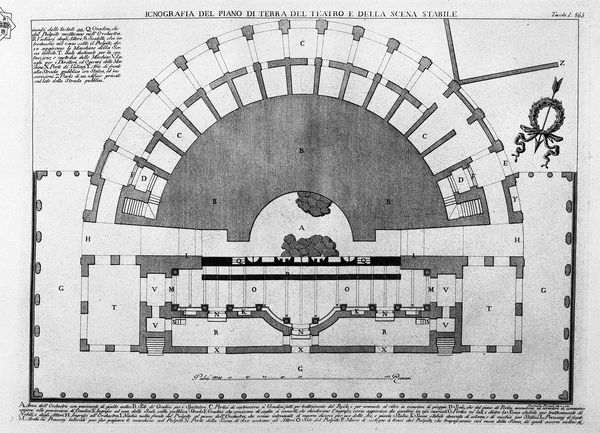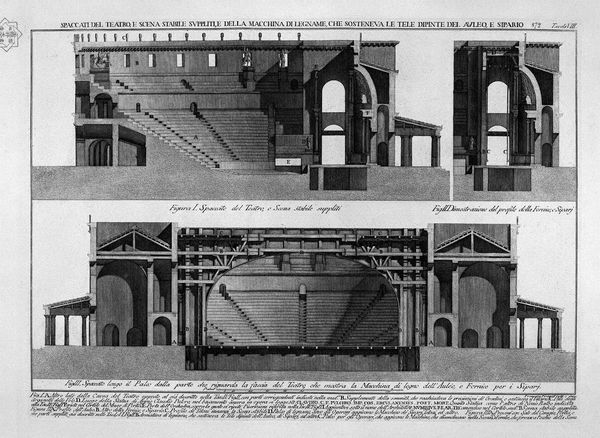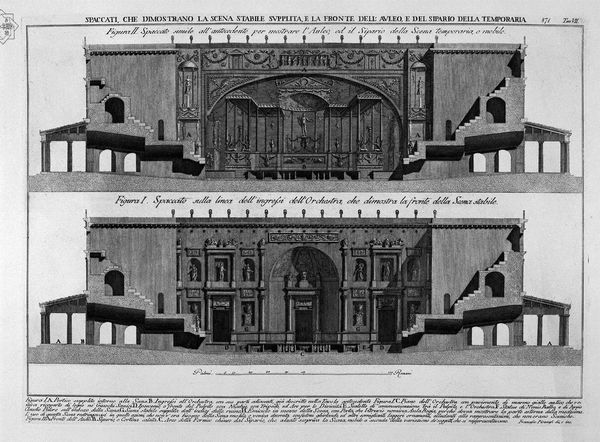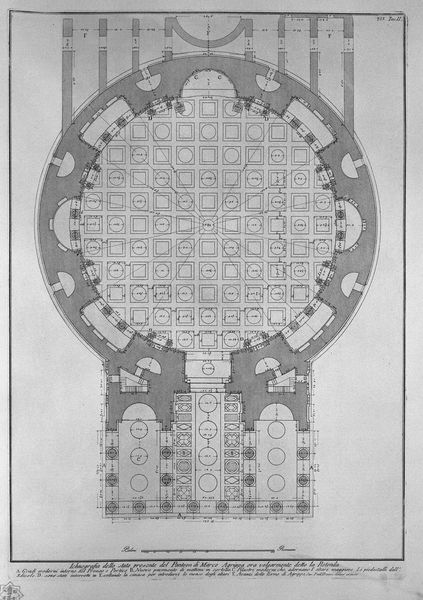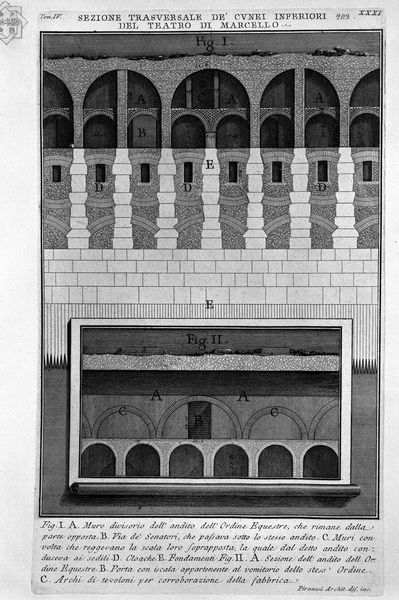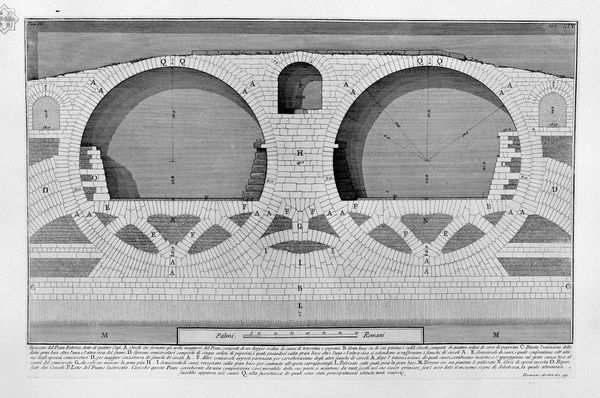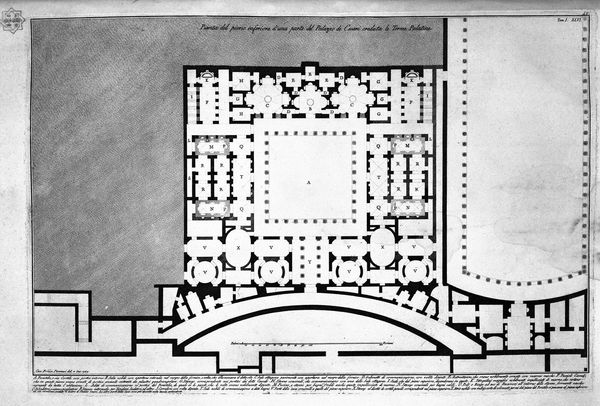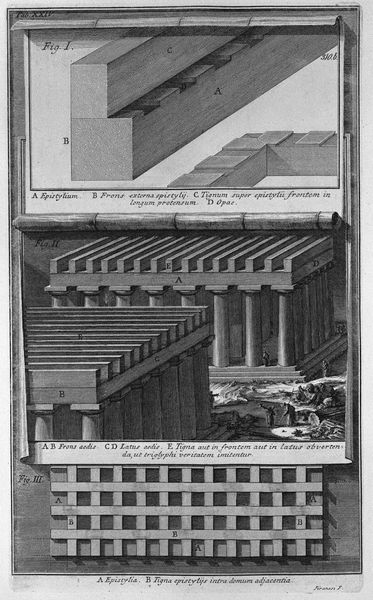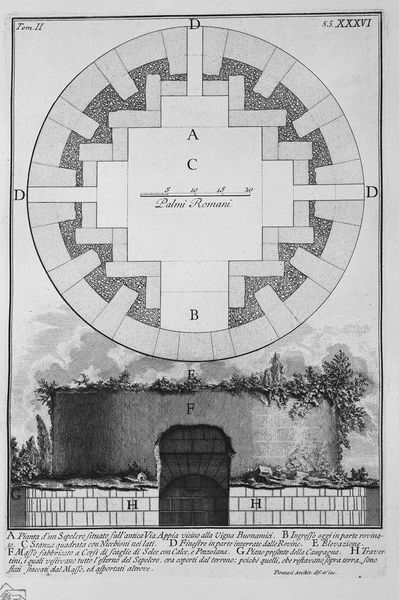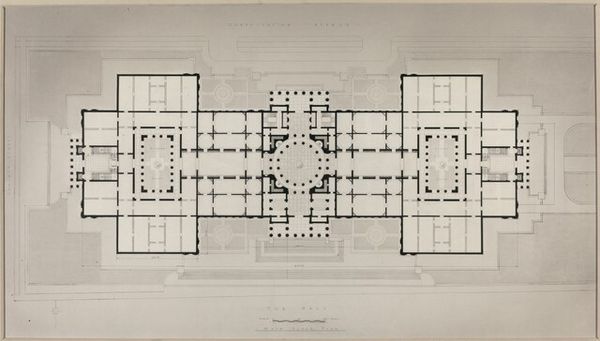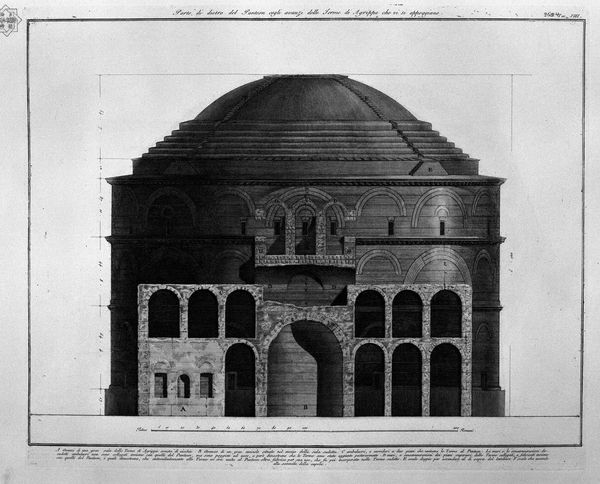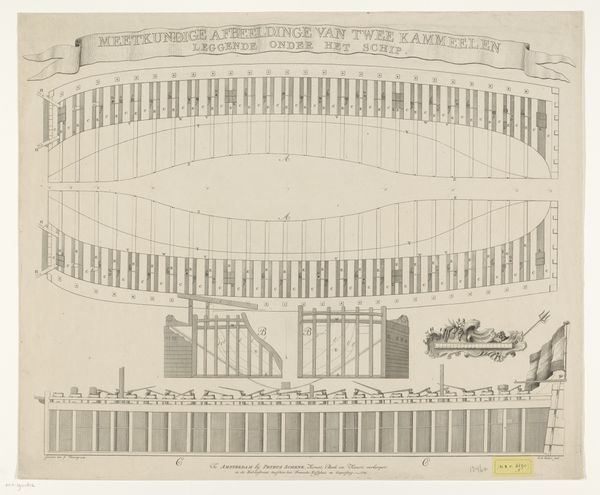
Ground plan of the first precinzione the theater, the `orchestra with its steps, and the pulpit of the scene, and its parts
0:00
0:00
drawing, print, engraving, architecture
#
drawing
#
neoclacissism
# print
#
sculpture
#
perspective
#
form
#
geometric
#
line
#
history-painting
#
engraving
#
architecture
#
realism
Copyright: Public domain
Curator: Here we have Giovanni Battista Piranesi’s architectural study: "Ground plan of the first precinzione the theater, the `orchestra with its steps, and the pulpit of the scene, and its parts.” It's rendered as a print, likely an engraving. Editor: My initial impression is one of immense structure, order and hierarchy. The meticulous linework speaks of rigid control, but also of potential for theatrical transgression within that architectural space. Curator: Absolutely. Piranesi was deeply invested in portraying Roman antiquity, but through a Neoclassical lens, emphasizing rationality and clarity of form, very typical of his time. But he also allows space for imagining performance. How was the power negotiated between performers, rulers, and public in this space? Editor: Well, you can see it in the layout itself. The seating, those radiating arcs, reinforces a strict social hierarchy. The focus on the "pulpit of the scene" highlights where power is concentrated, underscoring who controls the narrative. It’s about visibility and control of both sightlines and narratives. Curator: The plan does reveal so much about 18th-century social structures. It seems to illustrate perfectly how enlightenment principles sought to contain potentially chaotic elements in theatrical life, turning public gathering into spectacles of regulated spectatorship. It’s a powerful, though perhaps sanitized, view of a very vibrant part of society. Editor: Precisely. Though Piranesi offers an image that seeks to represent a foundational and clear image of architectural and social order, it’s an idealized projection rather than a transparent depiction. In that order there may have always been tension, particularly because we recognize that space always hosts a degree of chaos. Curator: These depictions, intended for dissemination through print, played a significant role in shaping how people perceived not only classical architecture but also broader notions of citizenship and civic engagement. Editor: Absolutely, and it is a great lesson of how social space and human behaviour reflect back on one another, sometimes in expected, but at other times in challenging, ways.
Comments
No comments
Be the first to comment and join the conversation on the ultimate creative platform.
